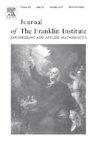无人机通信中基于魔方的空间调制性能评估
IF 4.2
3区 计算机科学
Q2 AUTOMATION & CONTROL SYSTEMS
Journal of The Franklin Institute-engineering and Applied Mathematics
Pub Date : 2024-11-04
DOI:10.1016/j.jfranklin.2024.107337
引用次数: 0
摘要
本研究提出了一种降低无人飞行器(UAV)通信误码率(BER)的方法。该方法涉及使用特定的有源天线,在精确的时间以特定的映射进行发射,确保发射天线之间的正交性。这种技术可适应众多发射天线和幅相调制阶次。当应用于空间调制(SM)和广义空间调制(GSM)时,它显示出明显的优越性,与传统的 SM 和 GSM 方法相比,效果显著提高,特别是在高海拔地区,传统方法会导致高误码率。引入一种名为魔方(MS)的新调制方法可进一步提高效果。MS 方法为发射天线组提供了独特的正交模式。此外,研究还介绍了在调制领域对魔方的利用。在各种飞行高度下,基于 MS 的 SM 模型显示,在 25 dB 信噪比 (SNR) 水平下,误码率比传统 SM 低近 103 倍。同样,基于 MS 的 GSM 模型显示误码率比传统 GSM 低近 100 倍。随着飞行高度的增加,所提出的方法会产生更好的结果,因此适用于各种飞行高度下的无人机通信。本文章由计算机程序翻译,如有差异,请以英文原文为准。
Performance evaluation of magic square based spatial modulation in UAV communication
This study proposes a method to reduce the bit error rate (BER) in communications by unmanned aerial vehicles (UAVs). The method involves using specific active antennas that transmit at precise times with a particular mapping, ensuring orthogonality among transmitting antennas. This technique can accommodate numerous transmit antennas and amplitude-phase modulation orders. When applied to spatial modulation (SM) and generalized spatial modulation (GSM), it demonstrates clear superiority and significantly improved results compared to traditional SM and GSM methods, especially at high altitudes where conventional methods result in high BER. Introducing a new modulation method called magic square (MS) further enhances the results. The MS method provides a unique orthogonality pattern for the transmitting antenna sets. Additionally, the study introduces the utilization of magic squares in the modulation field. The MS-based SM model shows a BER rate almost 103 times lower than traditional SM at the 25 dB signal-to-noise ratio (SNR) level for various fly altitudes. Similarly, the MS-based GSM model demonstrates a BER rate almost 100 times lower than traditional GSM. The proposed method yields better results as the altitude increases, making it suitable for UAV communication at various altitudes.
求助全文
通过发布文献求助,成功后即可免费获取论文全文。
去求助
来源期刊
CiteScore
7.30
自引率
14.60%
发文量
586
审稿时长
6.9 months
期刊介绍:
The Journal of The Franklin Institute has an established reputation for publishing high-quality papers in the field of engineering and applied mathematics. Its current focus is on control systems, complex networks and dynamic systems, signal processing and communications and their applications. All submitted papers are peer-reviewed. The Journal will publish original research papers and research review papers of substance. Papers and special focus issues are judged upon possible lasting value, which has been and continues to be the strength of the Journal of The Franklin Institute.

 求助内容:
求助内容: 应助结果提醒方式:
应助结果提醒方式:


